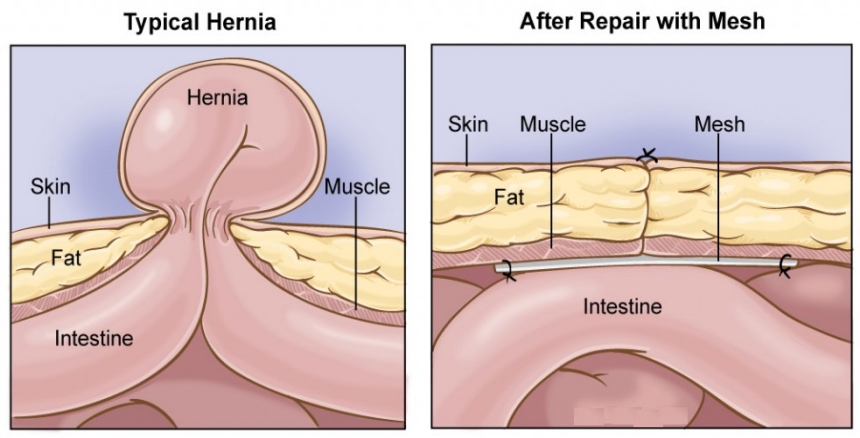
Laparoscopic hernia repair involves the use of an instrument known as a laparoscope. Only two to three small cuts are made into the abdominal wall through which laparoscope and other surgical instruments are passed into the abdomen. This surgery is often known as keyhole surgery because it is performed by making small incisions.
Usually, hernias occur either because of a natural weakness in the abdominal wall or due to too much strain on the abdominal wall such as persistent coughing, strain from heavy lifting, difficulty with urination or bowel movements, and weight gain to a great extent. Due to weak inside layers of the abdominal wall, the inner lining of abdomen pushes through it and forms a balloon-like sac. This may result in serious health problems. It can occur in men and women of all ages.
Types / sites of hernias
How is a laparoscopic hernia repair done?
Laparoscopic surgery uses a thin, telescope-like instrument known as a laparoscope. A small incision is made at belly button through which this instrument is inserted. It is generally performed under general anaesthesia and thus you would be sleeping through the surgery.
The laparoscope has a tiny video camera on its tip that projects an inside view of your body onto screen in the operating room. In order to cover the defects in the abdominal wall and strengthen the tissue, a mesh is placed on the inside.
Once the surgery is done, the small incisions made into abdomen are closed with one or two stitches or with surgical glue. These incisions are barely visible, within a few months.
Advantages of laparoscopic hernia surgery
Laparoscopic hernia repair has several advantages that are listed here-
Technical advantages of laparoscopic hernia surgery over conventional open surgery
